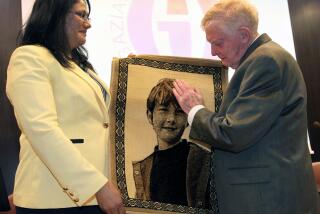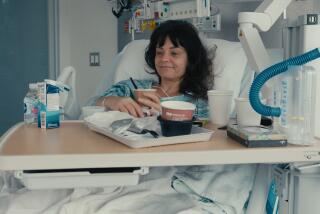Chain of kidney donors sets pace in transplants
- Share via
When Matthew Jones decided to donate a kidney to a stranger, the Michigan father of five had no idea he’d be starting a lifesaving “pay it forward” chain.
His kidney donation to a Phoenix woman in 2007 set off a long-running organ swap that resulted in 10 sick people getting new kidneys in the course of a year. It hasn’t ended yet.
“My dream would be that we eliminate the waiting list because we could turn every altruistic donor into 100 transplants,” said Dr. Michael Rees, a transplant surgeon at University of Toledo Medical Center.
The program Rees started now includes more than 70 of the 244 U.S. centers with kidney transplant programs. Here’s how his 10-person donor chain worked:
Jones, who lives in Petoskey, Mich., heard a news report about a man giving a kidney to a stranger and thought he’d like to do that too. He worked with a transplant center in Buffalo, N.Y., but no match worked out.
He ultimately was referred to Rees, who was trying to devise a sophisticated living-donor pairing system. Rees’ father, a computer programmer, had developed donor matching software.
It paired the 30-year-old Jones with Barb Bunnell, a 53-year-old Arizona woman whose husband wanted to donate a kidney to her but was incompatible.
Ignoring pleas from relatives to think of his children and drop the idea, Jones flew to Arizona for medical tests, taking his wife, Meghan, with him. Her staunch opposition vanished once she met Bunnell.
Just after the July 18, 2007, surgery, Jones recalls feeling “like a truck had run over me.” But he was well enough to go to a Diamondbacks baseball game five days later. The cost of the surgery and Jones’ travel was paid by Bunnell’s insurance.
Bunnell’s grateful husband, Ron, then became what Rees believes was the world’s first “bridge” donor, meaning his kidney donation was made later. Usually, paired transplants are done at the same time, with relatives agreeing to donate a kidney to a compatible stranger in exchange for a kidney for their loved one. That way donors can’t back out.
Such reneging hasn’t happened in his chains, Rees said.
Ron Bunnell was on a plane a week later to give his kidney to a 32-year-old Toledo woman, Angie Heckman. She’s a waitress at a bar owned by her mother, Laurie Sarvo. Sarvo then gave a kidney to a woman in Columbus, Ohio, whose daughter then became the fourth donor in the chain.
On it ran, through patient-donor pairs, including two more married couples, siblings, a daughter and father, and two friends. The last operation was performed in March 2008, with a 60-year-old woman in Toledo getting a kidney from a Baltimore donor. That recipient’s daughter wants to donate a kidney, but a match hasn’t worked out yet.
“There’s a very good possibility that when I’m dead and gone, this chain will still be going on,” Jones said.
A half-dozen other transplant groups have started similar programs, and the organization the federal government pays to oversee all U.S. organ transplants is developing its own national system.
Such efforts are needed, with the national waiting list for kidneys growing quickly due to the epidemic of overweight Americans with diabetes and high blood pressure, which damage kidneys.
Transplants from living donors accounted for more than a third of the 16,514 kidney transplants last year. Meanwhile, more than 78,000 Americans were waiting for a kidney and more than 4,000 died waiting in 2008.
Elizabeth Sleeman of the United Network for Organ Sharing, which runs the federal transplant system, cites estimates that paired donor chains could lead to 1,000 to 2,000 more kidney transplants a year.
“I think it definitely has that potential” to reduce the waiting list, she said.
Sleeman hopes that by late 2010 she’ll be doing both donor pairs and chains nationally.






